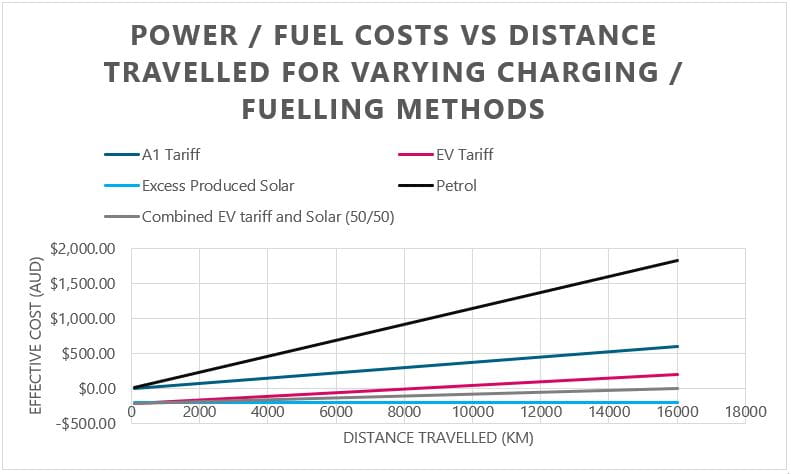
13 January 2020
Finance specifics for EVs will vary wildly depending on multiple parameters including: purchase price, maintenance costs, running costs (cost of power), energy provider, incentives, and depreciation. After all the research I’ve done, I’d conclude that EVs in Australia don’t currently make financial sense because of the high purchase prices versus the return on investment. Buying a brand new EV isn’t going to save you money in the short or long term. Price parity for traditional Internal Combustion Engine (ICE) cars and electric cars in Australia is predicted to arrive in about 5 -10 years’ time. Naturally, this will occur much sooner in other parts of the world (e.g. Norway).
In our specific case, however, the finances made a little more sense because we bought ours secondhand and the purchase price was less than half the brand-new price. As all good engineers tend to do, I put together a spreadsheet to compare some of the costs of ownership of our EV versus a typical ICE car.
First up are the fuel/power costs. The chart below shows the cost of fuel/power of the Leaf (for various charging regimes) versus our old car, a Nissan Xtrail.

If we were to charge the car on excess solar generation alone, drive 16,000 kms in the first year, and include the electricity company’s one-time AUD 200 rebate for moving to their EV tariff, we would save all of our projected annual petrol expenses (AUD 1824), resulting in a total savings of AUD 2024. That’s a good amount of cash (before tax) that stays in our pockets. No matter how we slice it, different combinations of charging overnight on reduced electricity rates result in some kind of savings.

After much research, I predict that servicing for the EV should be somewhere in the region of four to five times less expensive than with our Xtrail. The Xtrail would cost around AUD 1900 per year in servicing and repairs with its thousands of moving and working parts. The EV should cost about AUD 400, which would cover a general checkup. With way fewer moving/working parts, the only other outlay in an EV is the tyres. The manufacturers claim that some EVs will never require replacement brake pads, due to regenerative braking technology.
Since EVs cost more than their gas-powered counterparts, we should presume that depreciation will be higher for the EV. However, since our car is already five years old, it won’t depreciate as much as a new one would.
All in all, I estimate that our Leaf will save us approximately AUD 3500 per year versus our Xtrail. I think I could put some of that towards buying the family Sony’s upcoming next generation console iteration, the PlayStation 5.
The environmental benefits, the most prevalent of which is lower carbon emissions, of driving EVs will again, not surprisingly, vary wildly depending on many factors. A key one is the original source of generation of the grid electricity used to charge them. In Australia, a greater than average proportion of electricity is generated by coal-powered stations. This means that the green credentials of an EV charged from the grid are somewhat diminished. In fact, I read an article which concluded that, in such circumstances, hybrids (part ICE and part electric) can be significantly greener by comparison. In other parts of the world, however, this may not be the case. For example, France has a high proportion of nuclear power and Germany has a high proportion of renewable generation, significantly increasing the EV’s green credentials. In our case, I think we still earn ‘climate brownie points’ because, like I said, we try our best to charge the car primarily on homegrown renewable solar power.
My experience so far has been a great one. I think I may have owned my last ICE car. I can’t see any compelling reason to go back. And the case for EVs will only grow more compelling as we approach more widespread new EV/ICE car price parity. Predictions vary wildly because there are so many variables involved. However, I believe that the adoption of EVs will skyrocket beyond some of the more conservative predictions as, one by one, the barriers to adoption are smashed. Of course, let’s not forget that reasons to move to greener solutions are driven by more than just finances. I expect that more early adopters will get on board for less purely financially driven but more selfless, environmental reasons. In my case, ‘turning over a new leaf’ has not only generated significant cost savings but has also given me a good sense that I’m helping the planet along the way.
In case you missed them, read Part 1 and Part 2 of the 'Turning a new Leaf' series.